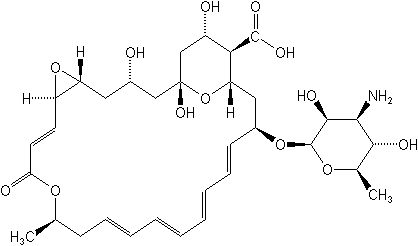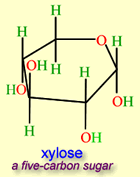Applications
Only applications of some products are
briefly discussed. For further applications and technical
bulletins, please contact us.
1. Sorbic Acid and Potassium Sorbate
This product is an odorless white crystalline powder. It exhibits
antimycotic activity, as fungistatic agent for foods, especially cheeses.
Solubility in water at 30 oC is 0.25%. Its sodium and potassium
salts are widely used to inhibit mold and yeast growth in a wide variety
of foods.
|
Applications
|
Reference
Dosage
|
|
Soy sauce, jelly, jams, Margarine, soft
candies
|
0.1 ~ 1.0 g/Kg
|
|
Low-salt preserved vegetables, canned
fruits, fruit punches,
|
0.1 ~ 0.5 g/Kg
|
|
Fruit juices, fruit drinks, grape wine,
fruit wine
|
0.1 ~ 0.6 g/Kg
|
|
Carbonated drinks, soda water
|
0.05 ~ 0.2 g/Kg
|
|
Dried fish products, drinks of soy bean
and mild, other soybean products
|
0.1 ~ 1.0 g/Kg
|
|
Cake stuffing, lactobacilli fermented
drink
|
0.1 ~ 1.0 g/Kg
|
|
Tobacco
|
0.6 ~ 2 g/Kg
|
|
Medicinal syrups
|
0.5 ~ 1 g/Kg
|
|
Feeds
|
0.4 ~ 1.5 g/Kg
|
|
Fish, meat products
|
0.5 ~ 2 g/Kg
|
|
|
|
| |
|
2. Niprosin ® (Nisin Preparation) |
| |
|
Applications
|
Suggested
Dosage(Max)
|
|
casings for frankfurters
|
6.9
mg/kg |
|
cooked meats and poultry products, sold
ready-to-eat
|
5.5
mg/kg
|
|
Clotted cream
|
10
mg/kg
|
|
Unripened cheese, Ripened cheese, Whey cheese,
Cheese analogues, Whey protein cheese
|
12.5
mg/kg
|
|
Processed cheese
|
250
mg/kg
|
|
Canned or bottled (pasteurized) or retort
pouch vegetables
|
GMP
|
|
Cereal and starch based desserts (e.g., rice
pudding, tapioca pudding)
|
3
mg/kg
|
|
Fine bakery wares
|
250
mg/kg
|
|
Ready-to-eat soups and broths, including
canned, bottled, and frozen
|
GMP
|
| Salad
dressing |
200
mg/Kg |
| Bear |
1500
mg/kg |
| Bear,
post fermentation |
50
mg/kg |
| Pasteurized
chilled soups |
200
mg/Kg |
| Canned
foods (high acids) |
200
mg/Kg |
| Pasteurized
milk products |
400
mg/Kg |
|
|
|
3. What Is
Natachloride(tm) ?
Natachloride(tm) is a
Natamycin preparation, standardized to have 50% pure Natamycin in
salt (Sodium Chloride). Natamycin (Pimaricin) is an antimyotic food
additive used to protect cheese from mold and yeast growth. |
|

|
|
How
is natamycin used?
Natamycin is currently approved by the FDA for use on the surface of
cuts and slices of cheese where the standards for such cheese
provides for the use of safe and suitable mold inhibiting
ingredients. Natamycin may be applied to cheese by dipping or by
spraying a liquid solution that contains 200 to 300 parts per
million (ppm) of the additive.
What
are the health effects of natamycin?
Animal studies on rabbits, dogs, and cows indicate that natamycin
has no toxic effects even at high levels of ingestion. In addition,
natamycin was found to have no reproductive or mutagenic qualities.
Animal studies also show that natamycin is fat and water insoluble,
allowing an estimated 90% to be excreted through normal
gastrointestinal functions. Natamycin was approved for use by the
FDA and has been widely used in Europe for over 40 years.
What
happens if natamycin is not used?
The use of natamycin on cheese allows manufacturers to produce
cheese that is acceptable to the aesthetic demands of consumers (no
discoloration or off flavors) by eliminating the growth of mold and
yeast that occurs during aging and storage. Secondary benefits
include reducing the risk of mycotoxin growth and longer shelf life.
What
is the status of natamycin in the United States?
The FDA amended its food additive regulations to allow for the use
of a dry mix of natamycin and cellulose (to prevent caking) on the
surface of cuts and slices of cheese. The amendment excludes the use
of the dry mix on grated or shredded cheese.
Other
Data Info for Natamycin |
4. Xylitol
Xylitol
is made from 5-carbon sugar Xylose. It is an odorless white crystalline powder. It has distinctive
sweetness, dissolves readily in water, and slightly in ethanol. It belongs to the D-category and is a natural product. Used as a diabetic supplement in food
industry.
Xylitol is often used in food and pharmaceutical industry as alternative sweeteners for diabetic diets,
because:
1) Xylitol has low glycemic index and 40% fewer calories than sugar. Work with your weight watch/control.
2) Xylitol is actually good for teeth. Xylitol does not cause cavities of the teeth as often as the other nutritive sweeteners, so it is used in chewing gum. it stimulates remineralization of teeth, and it fights ear and sinus infections. Use xylitol for your desserts if they are to be fed to kids.
3) It's beneficial for diabetics. It is taken up slowly from the intestine so that it causes little change in blood glucose.
A) Selected Books on Xylitol for Your References:
1. Biochemical Principles of the Use of Xylitol in Medicine
and Nutrition With Special Consideration of Dental Aspects by
K.K. Makinen, 1978
2. The Sweet Miracle of Xylitol by Fran Gare, 2003
3. Sweet Smart Xylitol by John Peldyak, 1996
4. Xylitol and Oxalate: Metabolic Studies in Animals and Man ,
1985
5. Xylitol: An International Symposium by Roche Products
Limited, J. N. Counsell, Xyrofin Limited, 1978
B) Selected Technical Papers on
Xylitol:
1) Water Activity in Sorbitol or Xylitol + Water and Sorbitol or Xylitol + Sodium Chloride + Water Systems at 20 C and 35 C,
Comesana, J. F.; Correa, A.; Sereno, A. M.; J. Chem. Eng. Data;
2) Crystalline Xylitol,
M. L. Wolfrom, E. J. Kohn; J. Am. Chem. Soc.; 1942; 64(7); 1739-1739.
3) Evaluation of Ion Exchange Resins for Removal of Inhibitory Compounds from Corn Stover Hydrolyzate for Xylitol Fermentation
Maciel de Mancilha, I.; Karim, M. N.;Biotechnol. Prog. ; (Note); 2003; 19(6); 1837-1841.
4) Xylitol Production from Sugarcane Bagasse Hydrolyzate in Fluidized Bed Reactor. Effect of Air Flowrate
Santos, J. C.; Carvalho, W.; Silva, S. S.; Converti, A.;Biotechnol.
Prog. ; (Article); 2003; 19(4); 1210-1215.
5) Hydrogenation of Xylose to Xylitol, J. Wisniak, M.
Hershkowitz, R. Leibowitz, S. Stein;
Ind. Eng. Chem. Prod. Res. Dev. ; 1974; 13(1); 75-79.
5. Xylose
Xylose,
natural D-xylose, is used as a substitute of Ribose in flavor
industry.
  Structures of Xylose
Structures of Xylose
Key Technical Papers on
Xylose
1) THE PREPARATION OF XYLOSE FROM CORN COBS.
K. P. Monroe; J. Am. Chem. Soc.; 1919; 41(6); 1002-1003.
2) Pecan Shells as a Source of d-Xylose, Clifford J. B. Thor, C. L. Smith;
J. Am. Chem. Soc.; 1934; 56(7); 1640-1640.
3) Two Novel -Carboline Compounds from the Maillard Reaction between Xylose and Tryptophan
Wang, M.; Jin, Y.; Li, J.; Ho, C.-T.; J. Agric. Food Chem.; (Article); 1999; 47(1); 48-50.
4) Nonenzymatic Browning in Food Models in the Vicinity of the Glass Transition: Effects of Fructose, Glucose, and Xylose as Reducing Sugar,
Lievonen, S. M.; Laaksonen, T. J.; Roos, Y. H.;
J. Agric. Food Chem.; (Article); 2002; 50(24); 7034-7041.
5) PENTOSE REACTIONS. II. DERIVATIVES OF XYLOSE
Charles D. Hurd, Lloyd L. Isenhour;
J. Am. Chem. Soc.; 1932; 54(2); 693-698.
6) Hydrogenation of Xylose to Xylitol, J. Wisniak, M.
Hershkowitz, R. Leibowitz, S. Stein;
Ind. Eng. Chem. Prod. Res. Dev. ; 1974; 13(1); 75-79.
7) Derivatives of L-Xylose, Robert K. Ness, Hewitt G. Fletcher, , Jr.;
J. Am. Chem. Soc.; 1952; 74(21); 5341-5343.
8) Integrated process for production of xylose, furfural, and glucose from bagasse by two-step acid hydrolysis
Amar Singh, Kumudeswar Das, Durlubh K. Sharma; Ind. Eng. Chem. Prod. Res. Dev. ; 1984; 23(2); 257-262.
9) Isolation and characterization of the most antimutagenic Maillard reaction products derived from xylose and lysine,
Gow Chin Yen, Chi Fai Chau, Jen Dan Lii; J. Agric. Food Chem.; 1993; 41(5); 771-776.
9) Production of Kojic Acid From Xylose by Aspergillus Flavus
H. N. Barham, B. L. Smits; Ind. Eng. Chem.; 1936; 28(5); 567-570.
6.
Texturizers
| Pro-Tex 0100TB
and Pro-Tex 01002TB |
are designed for marinades for the meat texture and
waterholding enhancing. |
| Pro-Tex 0360FC |
is designed for batters to congtrol the fat
absorbance during frying, and to increase the cripiness of the coating
your your poducts after oil-frying. |
| Pro-Tex
4090 |
is
designed for meat, bakery products, which build the textural strength. |
| Pro-Tex
0507GB |
is
designed for gravy base. Variation is available for extended shelf
life or brown color. |
| Pro-Tex 0750BD |
is
designed as a binder for meat and meat analogs to function through
adhesion/binding, emulsification, coagulating, gelling, and
thickening. |
| Pro-Tex 0820BD |
is
designed to anti-stale in the backery products. |
| Pro-Tex 8911 |
is
designed for meat products, which build the textural strength and impart
natural purplish color as the side effect. |
| Noodex |
is
designed for noodles and backery products to improve the flexibilty and
dough toughness. |
| Freshcut |
is
designed for keeping fresh the cuts of vegetable and fruits. |
| Brobitor |
is
designed for keeping fresh the cuts of vegetable and fruits. |
| Altorine |
is designed as an
alternative to the chlorine or chlorine solution as a
new natural sanitation |
Also click the product names on the Product page, with hyperlink for their
applications.
|




 Structures of Xylose
Structures of Xylose